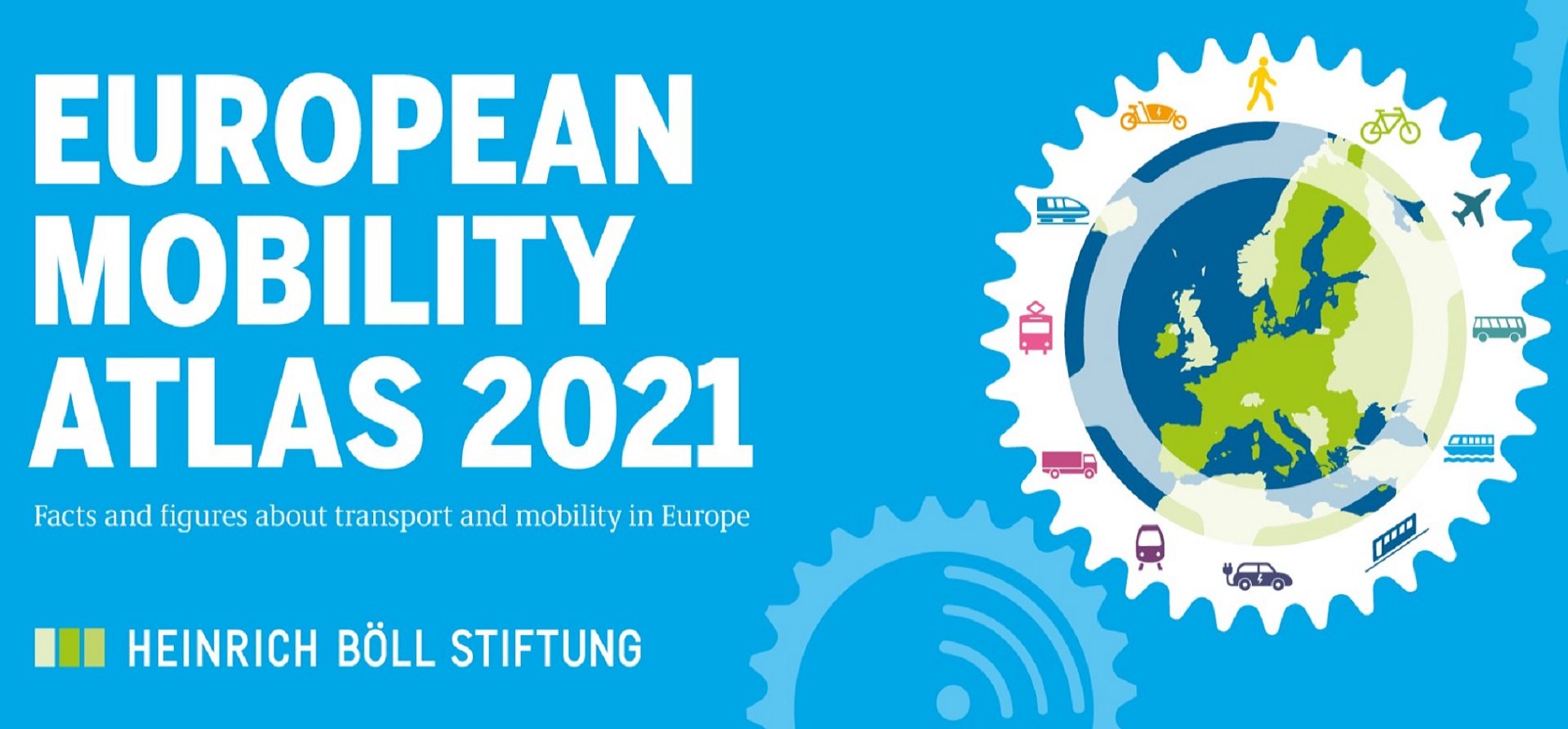Achieving the goals of the European Green Deal and striking climate neutrality by 2050 means transforming the entire mobility sector, which currently makes up nearly 30 percent of the bloc’s CO2 emissions. To help steer readers in the right direction, the Heinrich-Böll-Stiftung’s (hbs) new 2021 European Mobility Atlas provides a host of fact-based recommendations from sector experts. As 2021 is also the European Year of Rail, many of the Atlas’ graphics focus on this key sector, including the impacts of enhanced night-train service and more continent-wide cross-border connections. Franz Timmermans, Executive Vice President of the European Commission for the European Green Deal, dubbed the publication a “fantastic resource,” and underscored that “the more people who know about this, the more successful we’ll be.” A review by L. Michael Buchsbaum.

Rolling ambitions
By 2050 Brussels wants to ban conventionally-fuelled cars from cities and dramatically reduce high carbon fuels within aviation. Envisioning a 40 percent cut in shipping emissions, they also seek to shift half of medium distance intercity passenger and freight journeys from road to rail and waterborne transport. Taken together, this will contribute to a 60 percent cut in overall transport emissions. Among the challenges for policymakers as they work to achieve these goals is how to ensure current levels of connectivity and employment.
Inspired by the German-language version published in 2019, the new Atlas presents data from during the Covid-19 pandemic, a dramatically different context than that of two years ago. As a virus-induced economic slowdown coincides with the worsening climate emergency, the Atlas assesses status quo of mobility in Europe while reviewing many of the infrastructure improvements needed. It also provides best practice examples focusing on how to sustainably enhance mobility.
Rail, a key part of Europe’s transnational mobility, takes center stage, but the Atlas also explores the potential of electrifying the automotive and shipping industries as well as the future of digitalization. It addresses “last mile” challenges, offering a range of alternatives and emerging solutions.
Now available online, the 2021 Atlas is downloadable for free along with a large, foldable map highlighting projects throughout Europe. Looking at the future of mobility, Martin Keim, chief executive editor of the Atlas and Head of the European energy transition program in Brussels, said that “the real backbone of the movement are European citizens who are in charge of the green mobility transition.” During the digital launch, he invited readers to “be part of the change, to take your seat in this conversation.”
Transforming automobiles
The Atlas reports that motorized mass transport has hit its limits. Given current highway land use and biodiversity impacts plus overall sectoral emissions, each day that Europe’s transport remains dominated by fossil fuels serves to worsen the climate crisis. But with more than 14 million jobs attached to the automotive sector, including the production of internal combustion engines and parts, the EU does not want to endanger the industry.
However, endless growth and the continued construction of more lanes often boosts road congestion, particularly in cities, where cars already occupy too much space. Looking ahead to a post-Covid future, the limited public space we have needs to be used more efficiently for cycling, walking and various forms of cleaner public transport. Going forward, climate-friendly transport and fossil fuels are simply incompatible.
European Year of Rail
The European Commission has proposed making 2021 the European Year of Rail. Trains and railways will essentially be the backbone of achieving both a climate-compatible transport system and a climate-neutral EU by mid-century. But ten times more passengers use roads compared to rails and most railway planning is limited to individual countries.
In the future, investments to extend and reactivate rail routes within and across borders are necessary. But today the European railway network remains a patchwork full of gaps at the national borders. This is remarkable given that 40 percent of the EU’s territory consists of border regions, which are home to one-third of the Union’s population.
As of 2017, the share of passenger rail in land transport in the EU was just 7.8 percent, mostly national trips which represented around 80 percent of the total passenger numbers. Looking ahead, shifting mobility from road to rail will only work if considered from a trans-European perspective as well as to cater for local needs.
In his keynote address during the Atlas’ virtual launch, Franz Timmermans focused on the promise of improved and easier rail transport combined with the continent-wide expansion of night trains. Together, they formulate “the low hanging fruit, not only within the energy transition, but in terms of addressing the climate crisis,” he said.
Citing the Austrian rail system as a model for modular transport, he credited the flexible pricing system as key to their success. Similarly, he added, the Dutch railroads have used wind and renewables to electrify virtually their entire system, drawing emissions down nationwide. Calling for more investments in hydrogen-powered trains, Timmermans pointed to their current successful, albeit limited, deployment in northern Germany. He also called for the creation of new intercontinental booking systems and phone apps to “make it easier for consumers to mix modes,” and switch from rail to bus or bike.
More lessons in mobility
The Atlas also comprises a variety of concise lessons for teachers, policymakers, and citizens of all backgrounds. These include how mass tourism and trips on aircraft and cruise ships are particularly harmful. “The European single market has a decisive role to play in this regard and therefore Europeans have a fair share of responsibility here,” the authors write.
The digitalization of European transport ushers in opportunities as it offers different forms of transport within a single application. This potential is currently constrained by the fact that not everyone has access to such technologies.
Overall, the authors remind that “the Covid-19 pandemic has forced people to adapt their mobility behavior and #srethink conventional practices.” To help readers take part in this transformation, the Atlas serves as a toolbox of options for steering towards that future.